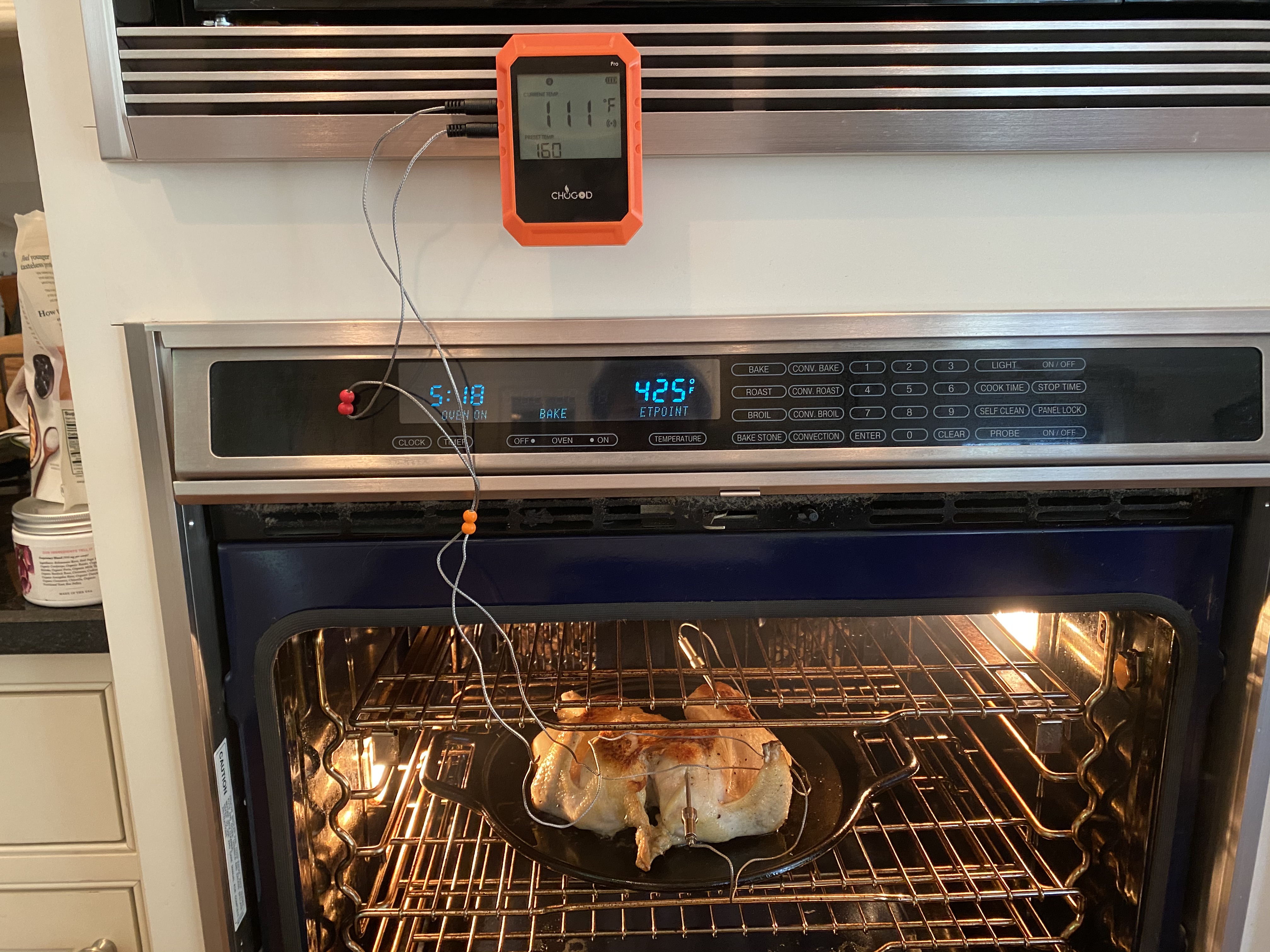
Thermometers are an essential tool for cooking. The things that I measure are meat and fish during cooking to check doneness and cooking progress.
I also like to measure the oven temperature at the surface of the dish, which can vary 10º or so even with a good oven.
I measure oil before frying - something that maybe I won't have to do after I get better at more subjective measures.
I also sometimes monitor the insides of sous vide bags to let me know when things like Tuna-ConfitTuna Confit
2 lb. top-quality fresh tuna (yellowfin or ahi), cut into 1-inch-thick steaks
Brining Solution
5 tbsp kosher salt or 3 tbsp sea salt
2 tbsp sugar
1 liter water
Confit Solution
3 cups olive oil or reuse previous confit oil
1 medium yellow onion, cut in 1. 1/2-inch slices
2 sprigs fresh rosemary
6 sprigs fresh thyme
1 bay leaf
1 tsp. black peppercorns, coarsely cracked
Zest of 1 lemon, pared in strips
are done.
There are a whole bunch of different thermometer choices, but there are roughly three categories.
The first one are the instant thermometers that are usually folding probes that you stick into the food which has the temperature on the handle. There are a variety of shapes and qualities with speed of measure and accuracy being one of the price drivers.
Another important type of thermometer are remote probes used to monitor temperature while cooking. Many have two probes so you can measure two parts of the food (for example, I measure the thigh and the breast when I do Oven-Roasted-Spatchcocked-ChickenOven Roasted Spatchcocked Chicken
Whole Chicken
Salt & Pepper
Light Olive Oil
Butter
) or you can measure the food as well as the oven or grill temperature.
Many remotes have a wireless system to allow you to monitor the temperature on a cell phone or a remote device. I recently bought a new one with a longer range so that I could track the temperature in my office - the first one that I had didn't reach my office.
The third type of thermometer is a thermocouple with a K-type connector. They tend to be more expensive but the standardized connector provides a huge range of options of shapes, sensitives, ranges and speeds. For example, here is a probe for hamburger patties. Thermocouples are electrical devices that use a specific type of thermoelectric effect to measure the temperature - which is what these probes use. There are other technologies for thermometers, but thermocouples seem to be the most common.
One thing I'm looking into is a fan connected to a thermometer to allow the regulation of the temperature in a grill. The Billows from ThermoWorks looks good.
One thing to remember about thermometers is that they are taking microbes from the surface of your food and stuffing it into the less-likely-to-be-full-of-microbes inside of your food1. For example, in a steak or a piece of fish, you're most of the microbes on the surface will be killed by the surface heat in cooking and I'm often measuring the internal temperature in order to have the inside cooked "just right." Usually, "just right" is not a temperature high enough for long enough according to the USDA, but because most microbes are on the surface, we aren't as at risk. However, if you're dragging surface microbes into the rare center, it presents a new kind of risk.
What I do when I'm doing a roast or a reverse sear or some other thing where I want to stick a thermometer into a thing that has a rare surface is to either wait until the surface is a bit cooked before sticking the thermometer in or I use a torch to blast an area on the surface to disinfect it before I stick the thermometer in.
my-thermometersMy Thermometers
I'm currently using: Pen Thermometers Lavatools Javelin Pro Thermapen Mk4 ThermoWorks Therma Differential Thermocouple Meter Fast Response Penetration Probe Type K, 4" L x .12" D reduce to .06" at Tip, 482F - -58 - 482F (cable and handle max temp 105ºF), 0.6 sec in liquid, 3-4 sec full reading Sous Vide Needle Probe 60mm, with waterproof heat shrink, 1m lead - -58 - 482ºF (cable and shrink max temp 194ºF) / < 0.4 sec in liquid, < 2 sec for full reading Oven Probe Type K 5...